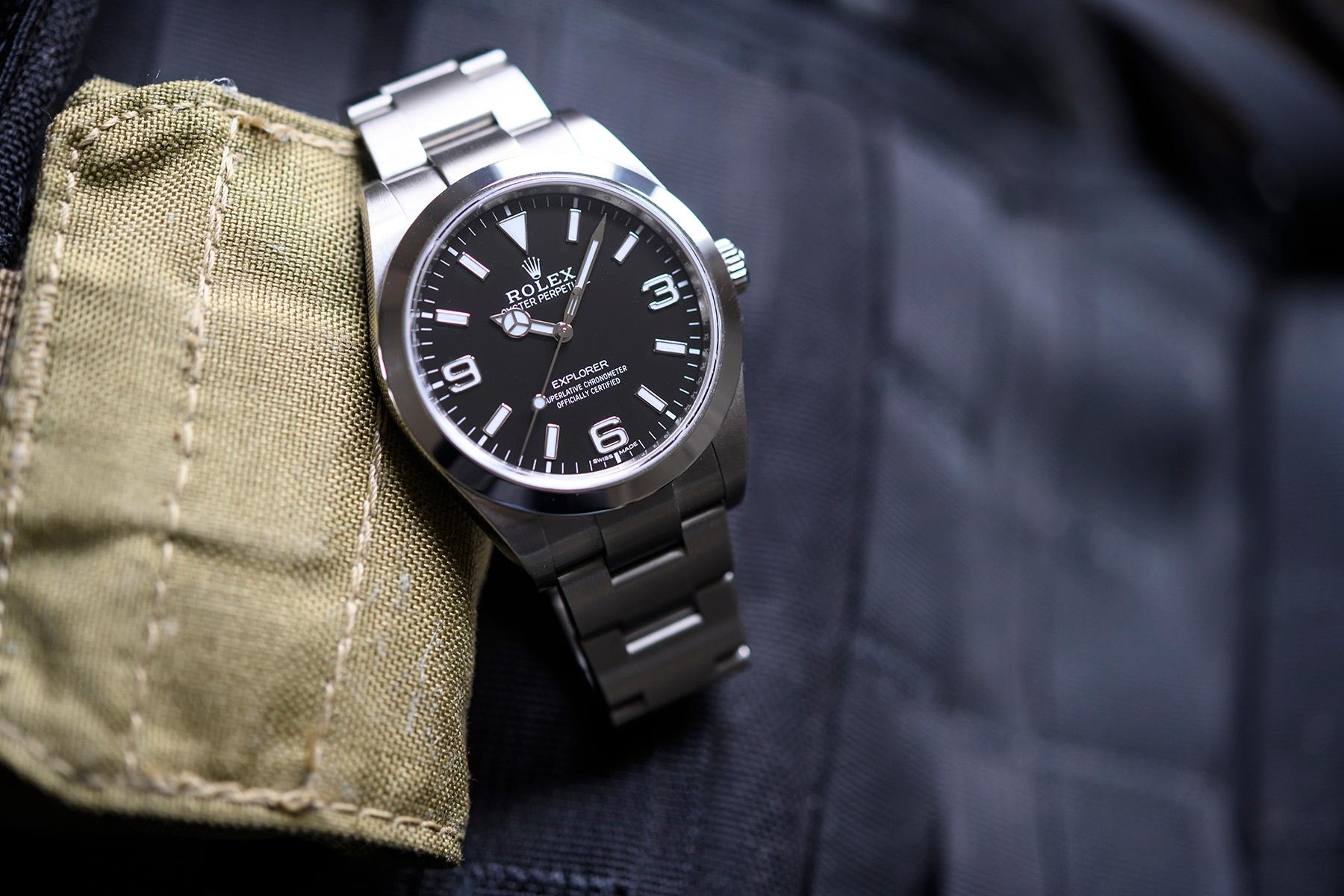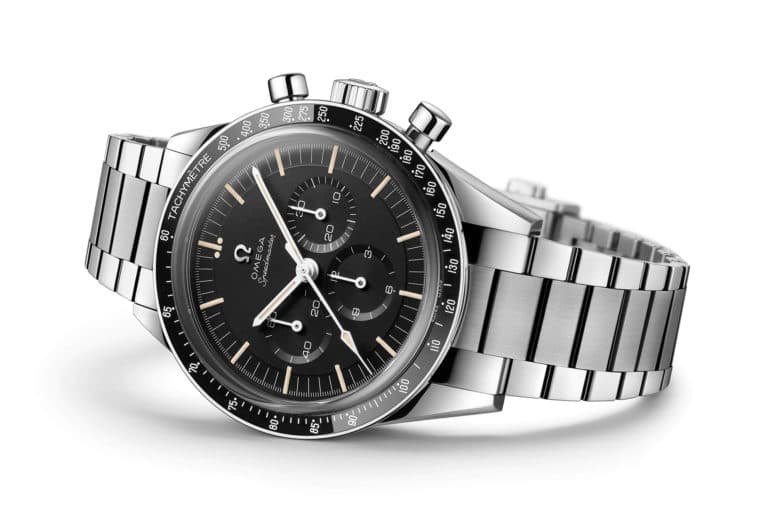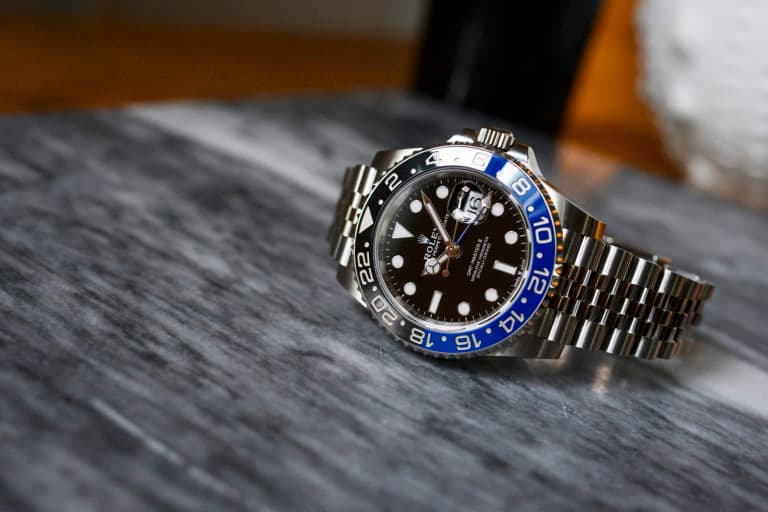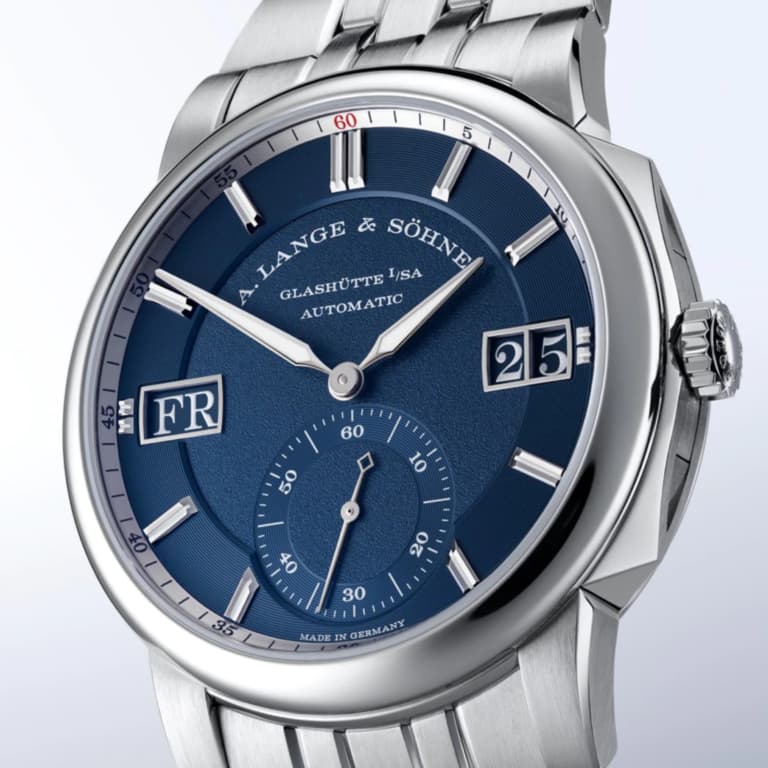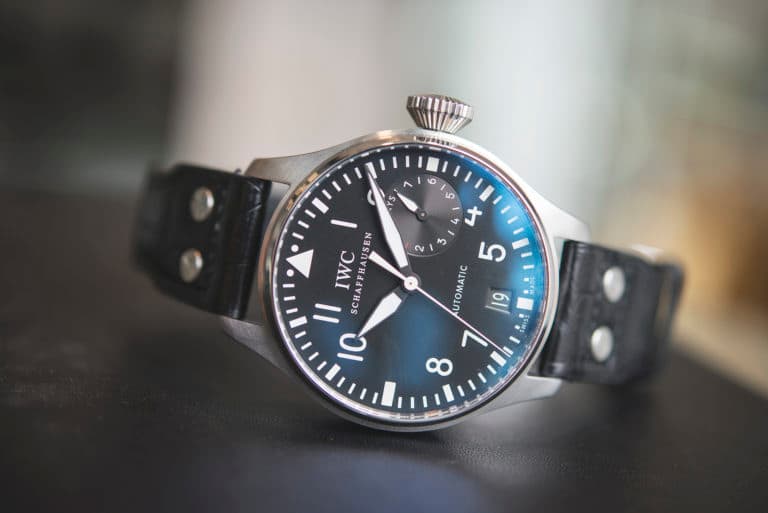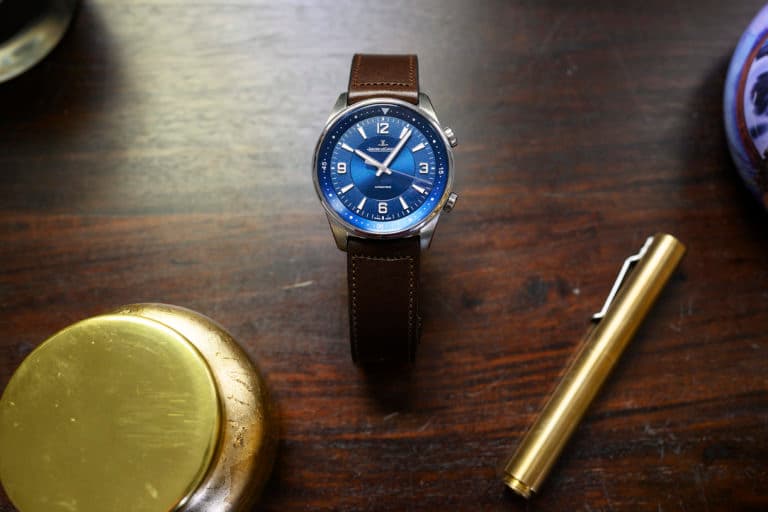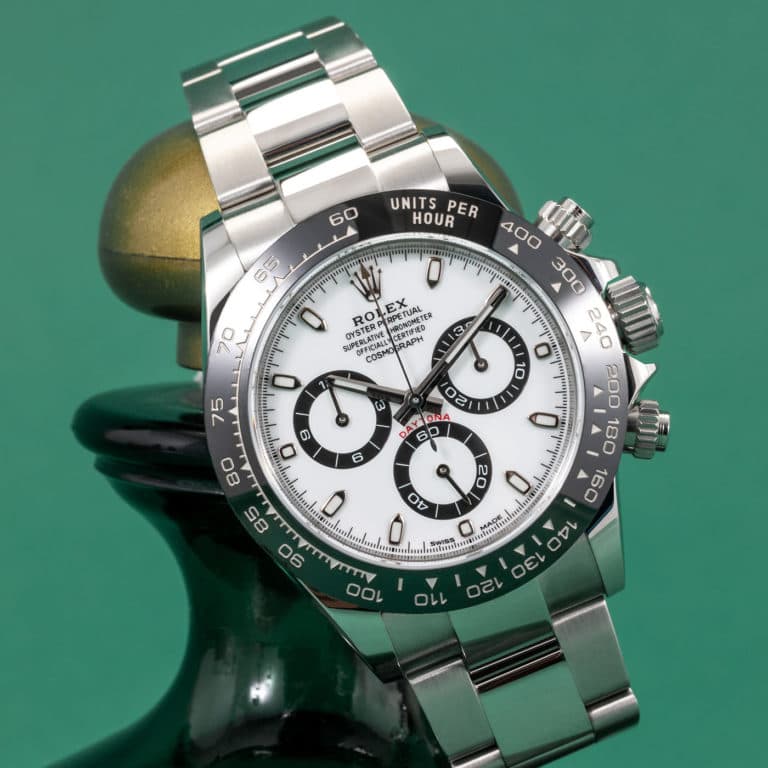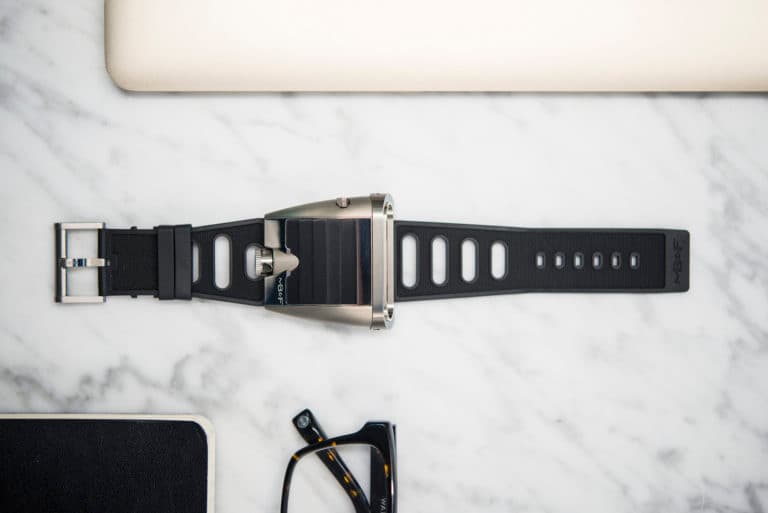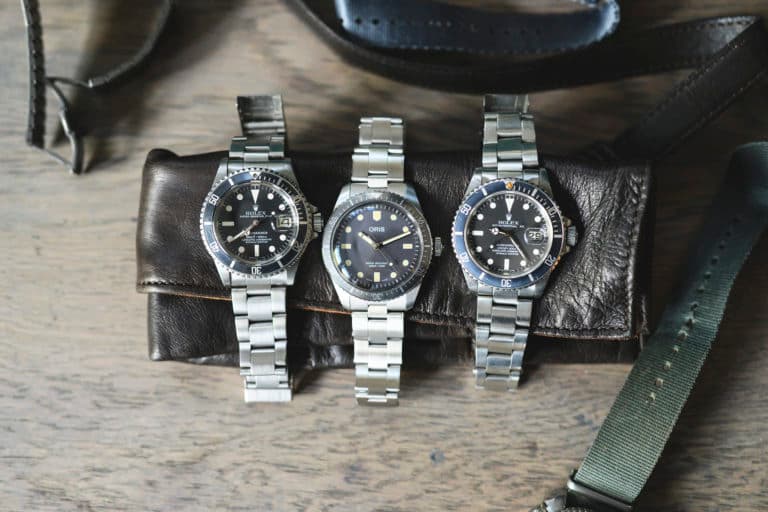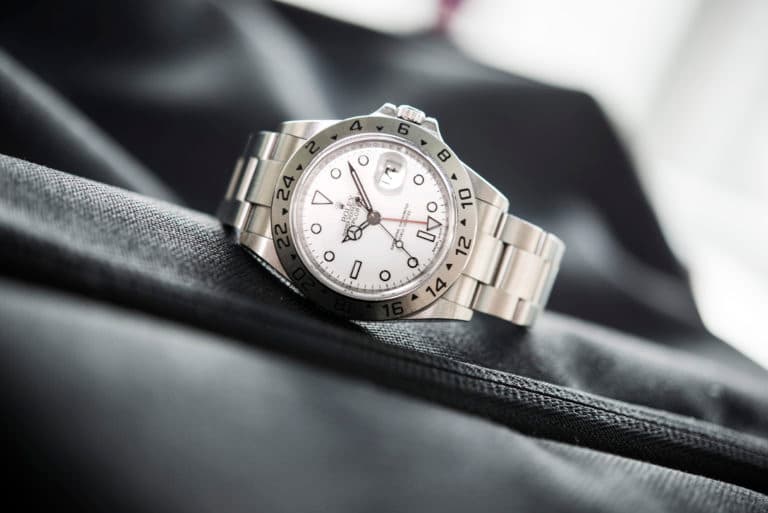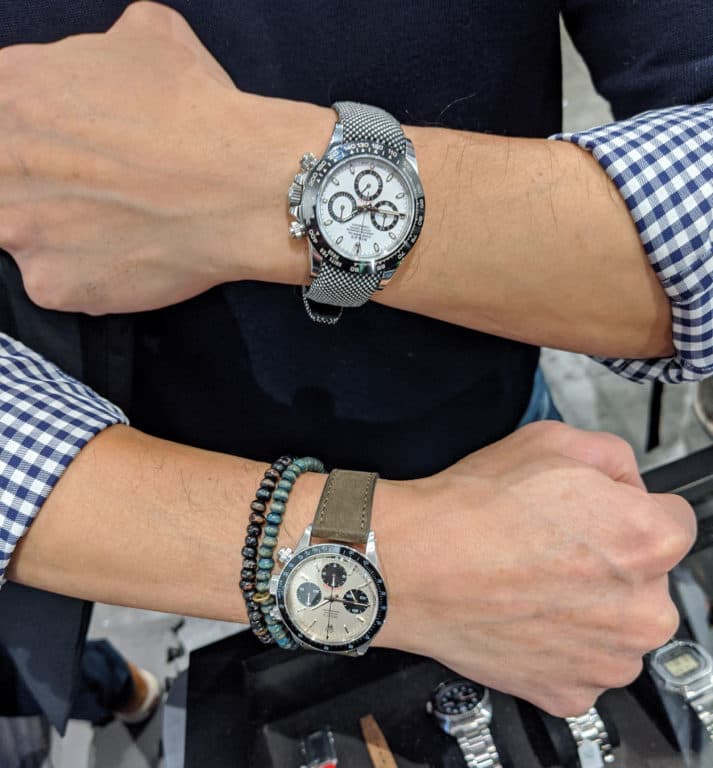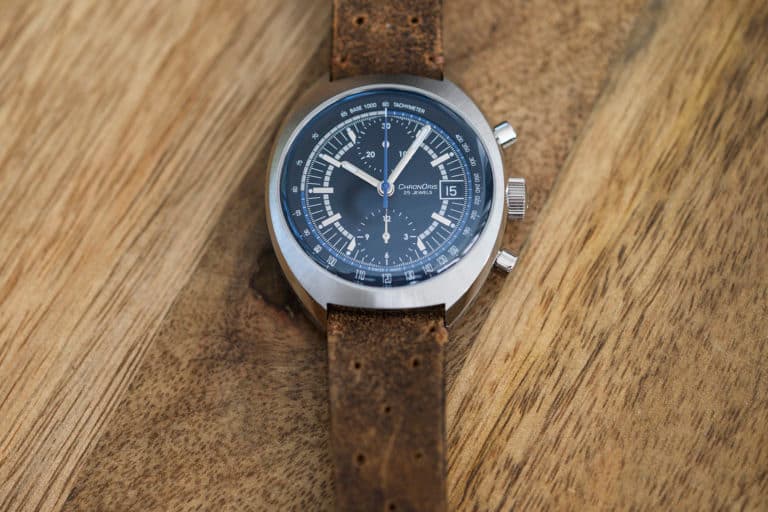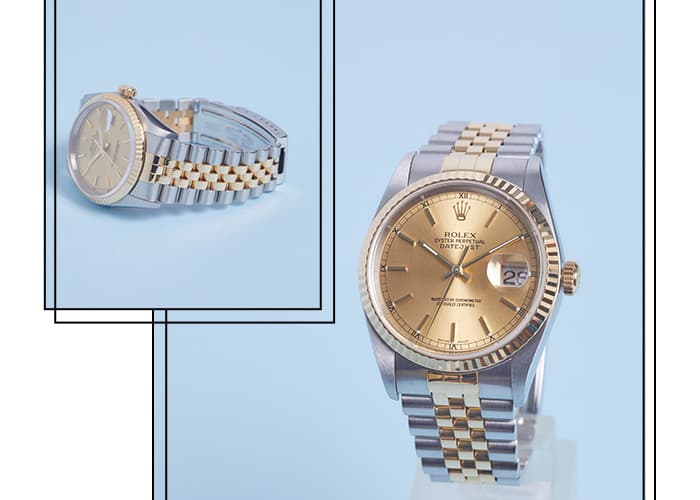The Rolex Explorer is a prolific watch. It’s one of those been-everywhere-done-everything type of watches that Rolex is known for but retains a preternatural under-the-radar vibe that eludes many modern watches, Rolex or otherwise. It’s not the most expensive, and certainly isn’t the flashiest, but the Rolex Explorer is arguably a cornerstone of the brand, and serves as something of a barometer for all Rolex professional models.
The Explorer is a simple, easy to understand watch, perhaps deceptively so, thanks to the subtle evolution it has experienced over its 65+ year history. The currently available Explorer reference 214270 sits at the apex of a well-weathered heritage, and it’s more approachable than ever as a result. Setting aside the history, the Explorer is quite simply, the entry to Rolex professional models, and serves a vital role in grounding far more technical models in everyday practicality.
It may not be hype-est watch in the Crown’s stable, but the Rolex Explorer is a practical everyday champion and we spent some time with it on the wrist to see just how well it stands up today.
True Heritage

A passing familiarity with the Rolex Explorer’s history as a conversation starter is generally tied to Sir Edmund Hillary and his sherpa, Tenzing Norgay making humankind’s first (known) ascent of the world’s tallest peak, Mt. Everest in 1953. Norgay and Hillary famously wore Rolex watches during the expedition thanks to the brand’s sponsorship. The watches weren’t gifts however, they were given to the climbers on condition they be returned for Rolex to study the effects of the extreme conditions subjected to it. Dutifully, the watch Hillary wore was returned to Rolex after completing the descent.
Let’s pause to note that Hillary also wore a Smiths watch during his final ascent, according to Rolex, serving as an ambassador to each brand. Additionally, Hillary and Norgay were not the only climbers with an eye on Everest, and Rolex worked closely with a variety of expeditions in the early ‘50s, providing oversized bubbleback reference 6098 certified chronometers.

Hillary & Norgay atop Everest, and the watch on their wrists.
The watches worn on Mt. Everest were produced in the first years of the ‘50s, labeled as Oyster Perpetual models with monoblock steel cases powered by A296 movements. These would serve as the spiritual successor to the pre-Explorer, which was quickly launched after the successful summit of Everest. As a sponsor of the expedition, Rolex was keen on capitalizing on the publicity and wasted little time in bringing the reference 6298 to market by late 1953.
The first Rolex Explorer references were clearly still feeling their way out, offered in a variety of configurations and dials, one of which saw the addition of the 3, 6, and 9 Arabic numerals alongside the hour wedges found on Hillary’s watch. This design would be made official with the references 6150 and 6350, with cases that also date to 1953 signifying an overlap in production designs that would appear in the market.

Explorer ref 6610
In 1971, Rolex Explorer II reference 1655 was released, which saw the addition of an oversized 24-hour hand-colored bright orange. Rather than a rotating bezel, the 24-hour markings were cut right into the steel. This was a watch for spelunkers, an admittedly niche hobby to this day, but thankfully the design found a foothold and remains a part of the Explorer family today.
A few years later, the brand would introduce their new 1030 caliber for the Rolex Explorer, which would go into the reference 6610, and lay the groundwork to the subsequent reference 1016 in 1963, which would go on to serve through the late ‘80s before transitioning to modern 5 digit references along with every other Rolex professional model.
From the onset, the Explorer differed from other Rolex professional models thanks to its smooth bezel and 36mm case dimensions, considerably smaller than the 40mm Submariner and GMT-Master of the same era. The Explorer would preserve the 36mm case size until 2010, at the crest of the big-watch craze sweeping the industry. The response from Rolex? They made it 39mm.
The Explorer 214270
The Rolex Explorer, along with the Air-King, are the only watches in the Rolex catalog that come in a single flavor. There are no dial variations, no precious metal offerings, no bezel finishing options. This is a singular vision with a take-it-or-leave-it approach we rarely see from Rolex. In an era when you can get your Sea-Dweller in two-toned should you so choose, this is a refreshing solidarity to the original intent of the watch.
The design of the 214270 has been honed over the generations, but it’s still the same simple package put forth in the ‘50s thanks to an ardent adherence to the ‘if ain’t broke, don’t fix it’ rule. Arguably the most notably shift in the Explorer design in the modern era is the move to a 39mm case, from a 36mm case it began life in. That move brought the Explorer to a much broader swath of the market by appealing to modern tastes, while still keeping the size in check overall. Today, 39mm is slightly undersized by most standards, but we think it suits the Explorer perfectly.
The dial of the Explorer is immediately recognizable due to the oversized Arabic hour numerals at 3, 6, and 9 – a design choice that’s stood the test of time since being introduced in the ‘50s. It’s a choice that Rolex also brought to the Submariner line for a brief period, but the look has firmly established itself as belonging to the Explorer in the generations since. The numerals themselves have evolved from applied lume (radium, tritium, and luminova), to applied white gold, and finally, to white gold filled with lume.
Likewise, the hands have undergone subtle changes in their lifetime. Early references had pencil hands for a very brief window before switching to the more familiar mercedes hour hand for improved legibility. In recent years they’ve become more robust, with an hour hand that’s wider than what you’d find on the Submariner. The hour markers between the numerals have also grown to accommodate their own lume, including the triangle at 12 o’clock. All this combined make the Explorer imminently legible in the dark.
One holdover from the vintage era is the matte dial, something die hard fans would love to see return to other professional models that have embraced high-gloss black dials. It’s a subtle difference, but in day to day use noticeable when compared to something like a Submariner. Where the Sub will stay stark black in pretty much any light, the Explorer shifts to dark grey, and gives the printed branding a bit more character.
The case and bracelet of the Explorer are fully brushed save for two areas: the case walls and the bezel ring. The former being standard practice, while the latter is more controversial here. Were that bezel fully brushed, the watch would shift to being full-fledged field watch, but being polished, it gives the Explorer a look that feels at home deep into the formal section of your wardrobe, and makes the watch all the more versatile as a result. While the watch would undoubtedly look fantastic in fully brushed guise, there’s no denying the strategic value afforded by the small polished surface.
Inside the Explorer beats the Rolex built caliber 3132, a tried and true movement that features a Parachrom hairspring and Paraflex shock absorbers. Not only is it built like a tank, it’s also a superlative chronometer, meaning it’ll keep you within +/- 2 seconds of deviation per day. It’s a solid caseback so no movement views here, just business.
On The Wrist
The Explorer is very easy to get along with on the wrist. The case measures 39mm in diameter, a hint over 11mm in thickness, with a lug to lug measurement of 47mm. This is a watch that disappears from your wrist if you’re not actively looking at it. The oyster bracelet feels as fresh as ever here, and will make you miss it on the likes of the GMT line, especially in fully brushed execution.
The clasp is a folding Oysterlock with a 5mm extension link. The Glidelock mechanism from the Submariner would offer a big improvement here in overall fit and finish, and this is a move we’d like to see on future generations of the watch.
Going back to the polished bezel ring which, in as much as it helps the overall versatility of the watch, can be a distraction in practice, especially in contrast with the simple matte black dial. The trade off is worth it, if in fact you plan on using this as a daily wearer or single watch (which you definitely could), as the watch looks strangely at home in a suit and tie outfit. Anything more formal than that and the Explorer may be a stretch, but that means this watch will be a suitable choice for what probably consists of 95% of your closet.
The bezel ring will present no issues if you’re coming from something like a Datejust, but if you’re used to other professional watches you will likely end up missing a bezel with some information on it. Compared to a Sub or GMT, both of which offer a bit more drama on the wrist (and subsequently will have you checking the time more often), the Explorer is rather tame. It’s not a watch that will have you coming up with any excuse to check the time. Again, this is a watch that disappears from the wrist, for better or worse.
Competition
The Rolex Explorer is priced at $6,550 from Rolex, and is the standard bearer of the genre. Seriously, if you’re in the market for a time-only steel sport watch that performs well all around, and has the flexibility to slide into any fit you can throw at it, get this watch. Full stop. If all that sounds good to you, but you just can’t get on board with Rolex (or aren’t eager to get on a wait list), there are some other great options in the same price range.
Jaeger-LeCoultre Polaris Automatic
We’ve reviewed this watch in depth and found that it hits a lot of the right notes for a steel sport watch. The blue dial is more dramatic than the Explorer, and the optional straps offer a more playful personality. The Polaris retails for $6,700, but a deal here is more likely than not so Bid aggressively on this one if you like it.
Omega Railmaster
The Railmaster is Omega’s take on a rugged time-only watch that spans genres. Omega have re-issued the original design in 38mm, so if you like the throwback vibe this will be worth a look. This watch also features an Omega built co-axial movement, a steel bracelet, and can be had for under $5k.
IWC Pilot XVIII
The IWC Pilot watch is another fantastic all around option that leans into the field/tool watch genre yet works with a broad range of fashion choices. The latest model even comes with an in-house movement, but we love the titanium case and warm dial of the Heritage model available on StockX for under $5k.
Conclusions
The Explorer, perhaps more than any other Rolex, has remained true to its roots clear back to the 1950s. It has embraced a simple design ethos and looks as relevant today as it has in each of the prior generations in which it’s made an appearance. This is watch that unites vintage and modern collectors alike, and represents a clear link to the utilitarian Rolex of the past. This watch is high on class and low on drama, presenting an accessible and practical every day option for watch folk and non watch folk alike. It continues to be the bar of the all around adventure class of watches.
The Rolex Explorer 214270 is available on StockX right here.


